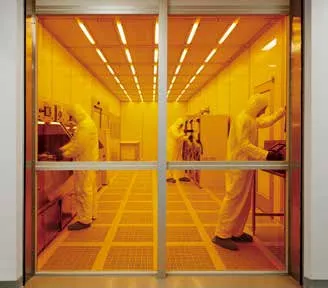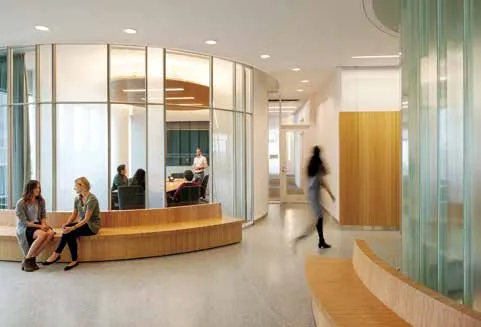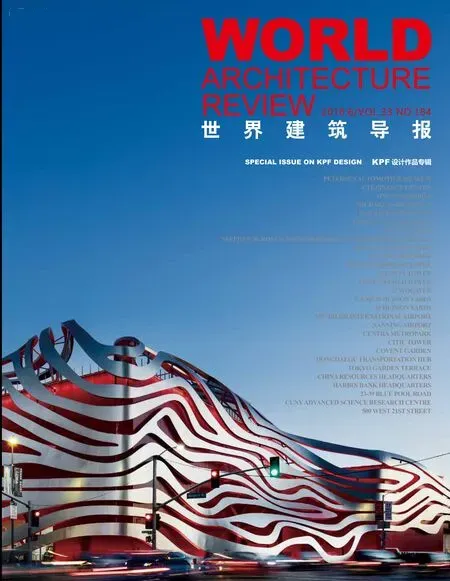纽约市立大学先进科学研究中心美国纽约州纽约市
业主:纽约市立大学
项目规模:3.62万平方米
类型:教育+健康
合作设计单位:Flad Architects(记录建筑设计单位)
摄影:Jeremy Bittermann (p109, 110, 111), H.G. Esch (p109),Tim Griffith (p108), Steve Hall / Hedrich Blessing (p108)
Client: City University of New York
Size: 36,200 SM
Program: Education + Healthcare
Team: Flad Architects (Architect of Record)
Photography: Jeremy Bittermann (p109, 110, 111), H.G. Esch (p109),Tim Griffith (p108), Steve Hall / Hedrich Blessing (p108)
先进科学研究中心(ASRC)的两座大楼为纽约市立大学打造出一个科学门户。这一最高水准的设施位于山顶,拥有哈莱姆区俯瞰视野,为国际知名研究人员的吸附地及大学教师和学生的知识中心。一座景观广场于地面层连接了两座翼楼。
两座建筑通过统一的起伏玻璃幕墙与景观广场相连,呈现出具有凝聚力的外部设计,同时在大楼内部又保持独特的个性。彩釉玻璃肋板的间距为30英寸,根据所处的位置,呈一定角度的开启或关闭状态。在标准书桌高度,肋板可以缓解来自东西向的炫光。ASRC内部采用了体现档次的中性色调,而第二栋建筑—探索中心则使用了大胆的颜色来衬托年轻学生群体。在KPF设计中,大楼的中央楼梯被视为一个兴趣点。弯曲的玻璃上涂覆了多色薄膜,以产生微妙的棱形效果,从而与办公区和社交空间形成完美互补。
ASRC的科学人员希望采用直线型和模块化的平面布局—由业态的设备和功能确定。KPF设计团队提供了较小规模的灵活性,来调和实验室的空间模块的重复性。
每座建筑内办公室的带状区域通过连接广场面对面,表达出一种流畅的对话——一种对研究和学习本质的象征性信号。从项目的基本概念到建筑立面的过渡,压缩和释放的手法也转化为一项平衡厚重和精巧的技艺。
设计也通过精心选材来表达此类想法。大楼基础采用了石南花灰色石材,呼应校园的最初形态。这栋建于20世纪20年代的历史建筑主要采用曼哈顿片岩这种本地天然材料建造。ASRC项目使用的纹理石材则源自中国,反映了原始石材的基调。设计团队开发出由小块组成的看似随机的面板系统,带来了有机的效果,确保其在景观中的环境营造。地面至天空的过渡也被延续到动态的彩釉玻璃幕墙之上。
The two buildings of the Advanced Science Research Center (ASRC) create a gateway for science at the City University of New York. OverIooking HarIem at the crest of a hiII, the state-of-the-art facility serves as a magnet for internationally recognized researchers and acts as an intellectual hub for the college’s faculty and students. A landscaped plaza links the two wings at the ground level.
With uniform, undulating glass skins linked by a landscaped plaza, the two buildings express cohesive exteriors, while maintaining distinct personalities within their respective interiors. Fritted glass fins are spaced 30 inches apart, angled to appear open or closed depending on one’s vantage point. At typical desk height, the fins also mitigate sun glare from the east and west. The ASRC’s interior textural palette of neutral tones that communicates sophistication, while the second building– the Discover Center – uses bold colors to reflect its community of younger students. KPF’s design treats the block’s central stairs as a point of interest. A polychromatic film was applied to its curved glass, generating a subtle, prismatic effect – a solution that perfectly complements the office and social spaces.
The ASRC’s scientific staff sought a rectilinear and modular plan, dictated by the equipment and functions of its program. The KPF design team made sure that flexibility a smaller scale presented an opportunity to offset the rigor of the lab bars.
Ribbons of office space within each building face each other across the connecting plaza in expression of a fluid dialogue – a symbolic signal to the nature of research and learning. The nature of compression and release also translates to the project’s foundation and its transition into the buildings’ facades – a feat of balancing between gravity and levity.
Materials were specifically chosen to express similar ideas. Heather gray stone at the base echoes the college’s original campus. Built in the 1920’s the historic quad was predominately rendered in Manhattan schist, a material natural to the borough. The textured stone used on the ASRC project,originating from China, reflects the original stone’s tone. The design team developed a panelized system of blocks that appear random, lending an organic quality that assures its context within the landscape. The transition from ground to sky continues into the dynamic, fritted, glass curtainwall.













